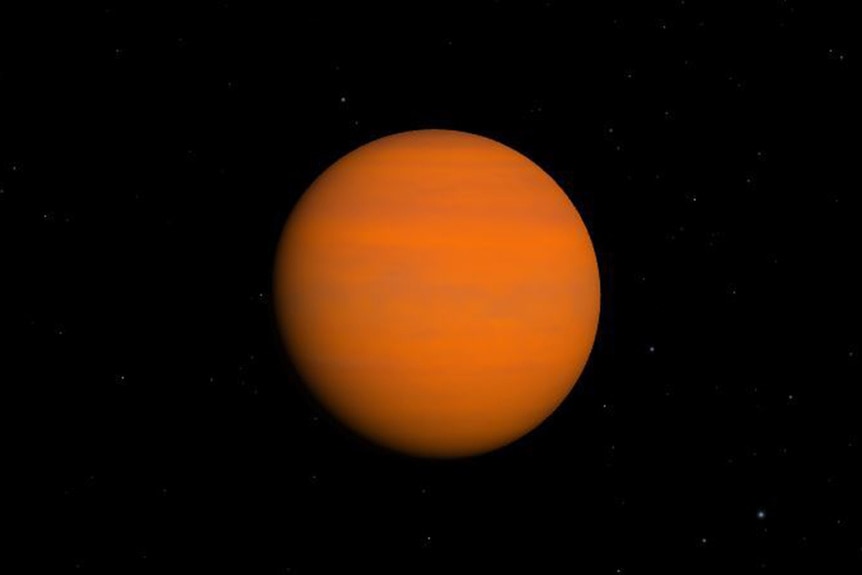Create a free profile to get unlimited access to exclusive videos, sweepstakes, and more!
Say Hello to the "Cotton Candy" Planet, WASP-193 b, the Second Lightest Planet Ever Found
Now all we need is a soda planet and funnel cake planet.
The crew of SYFY’s The Ark is headed to Proxima centauri b, an exoplanet around the star next door, a mere 4.2 light-years away. It’s about the size of Earth and about 1.07 times the mass. Standing on the surface, you’d feel gravity pretty similar to what you’re used to here at home, and it’s in the habitable zone of its star, Proxima centauri, but it isn’t exactly paradise.
Proxima centauri is a red dwarf star, relatively small with a much closer habitable zone. Proxima centauri b, our alleged future home is probably tidally locked so that one side always faces the star and extreme UV radiation has probably stripped away any atmosphere. Compared to Earth, it’s a weird alien world and probably not the sort of place we’d want to live, but exoplanets get a whole lot weirder. Recently, astronomers discovered an ultra-fluffy world about the same density as cotton candy.
Exoplanet WASP-193 b Is a Fluffy Jupiter as Light as Cotton Candy
The planet, dubbed WASP-193 b, is the second-lightest planet ever discovered according to the findings published in the journal Nature Astronomy. Astronomers discovered the planet as part of the Wide Angle Search for Planets (WASP) program which utilizes two robotic observatories, one in the Northern Hemisphere and the other in the Southern Hemisphere. Together, they can observe the entire night sky, measuring the brightness of thousands of stars.
The confectionary discovery was made using data from surveys taken between 2006 and 2008 and again from 2011 to 2012. When taken together, those surveys revealed a periodic dip in brightness from the star WASP-193, about 1,200 light-years from here. That dip in brightness is the result of a planet passing in front of the star, from our point of view, every 6.2 days. That told astronomers its orbit and, by watching the planet transit in front of the star, they were able to calculate its diameter. WASP-193 b measures in at about 1.5 times the width of Jupiter but it has only about a tenth of the mass. Out of the more than 5,000 exoplanets discovered to date, only Kepler 51 d is lighter.
For More on Exoplanets:
JWST Explores Possible Sign of Alien Life on Exoplanet K2-18 b
Some Planets Shrink Over Time, New NASA Data Reveals Why
Astronomers Discover Exoplanet Denser Than Steel
In our solar system, gas giants hang out in the cold, dark suburbs, but WASP-193 b likes it hot. It orbits at a distance of only 6.3 million miles, just 7% the distance from Earth to the Sun. If we shrink down the solar system so that the distance from here to the Sun is equivalent to the distance from Los Angeles to New York City, WASP-193 b is about as close to its star as New York City to Baltimore.
Figuring out the orbit and diameter were relatively straightforward, but narrowing in on a mass was tougher because WASP-193 b is so light. It took four years of observations to get enough data to calculate its mass from the wobble it exerts on its parent star. When they compared the observed mass with the diameter, they landed on a density of just 0.059 grams per cubic centimeter, almost exactly the density of cotton candy. That’s compared to 1.33 grams/cc on Jupiter and a chunky 5.51 grams per cubic centimeter on Earth. Researchers ran the measurements multiple times to make sure they were correct.
Astronomers suspect WASP-193 b is mostly made of gaseous hydrogen and helium, the lightest possible elements, puffing up an inflated atmosphere tens of thousands of miles thick. And it’s not totally clear how a world like it could have formed in the first place.
“We don’t know where to put this planet in all the formation theories we have right now, because it’s an outlier of all of them. We cannot explain how this planet was formed, based on classical evolution models. Looking more closely at its atmosphere will allow us to obtain an evolutionary path of this planet," said co-lead author Francisco Pozuelos, in a statement.
Because the atmosphere is so large it provides an especially large target for studying its composition by measuring the starlight passing through it. Future studies of this planet could help unravel the mystery of how these kinds of worlds get made.
Journey to an exoplanet with the crew of The Ark. Season 1 is streaming now on Peacock, Season 2 debuts Wednesday, July 17 at 10/9c on SYFY.



































